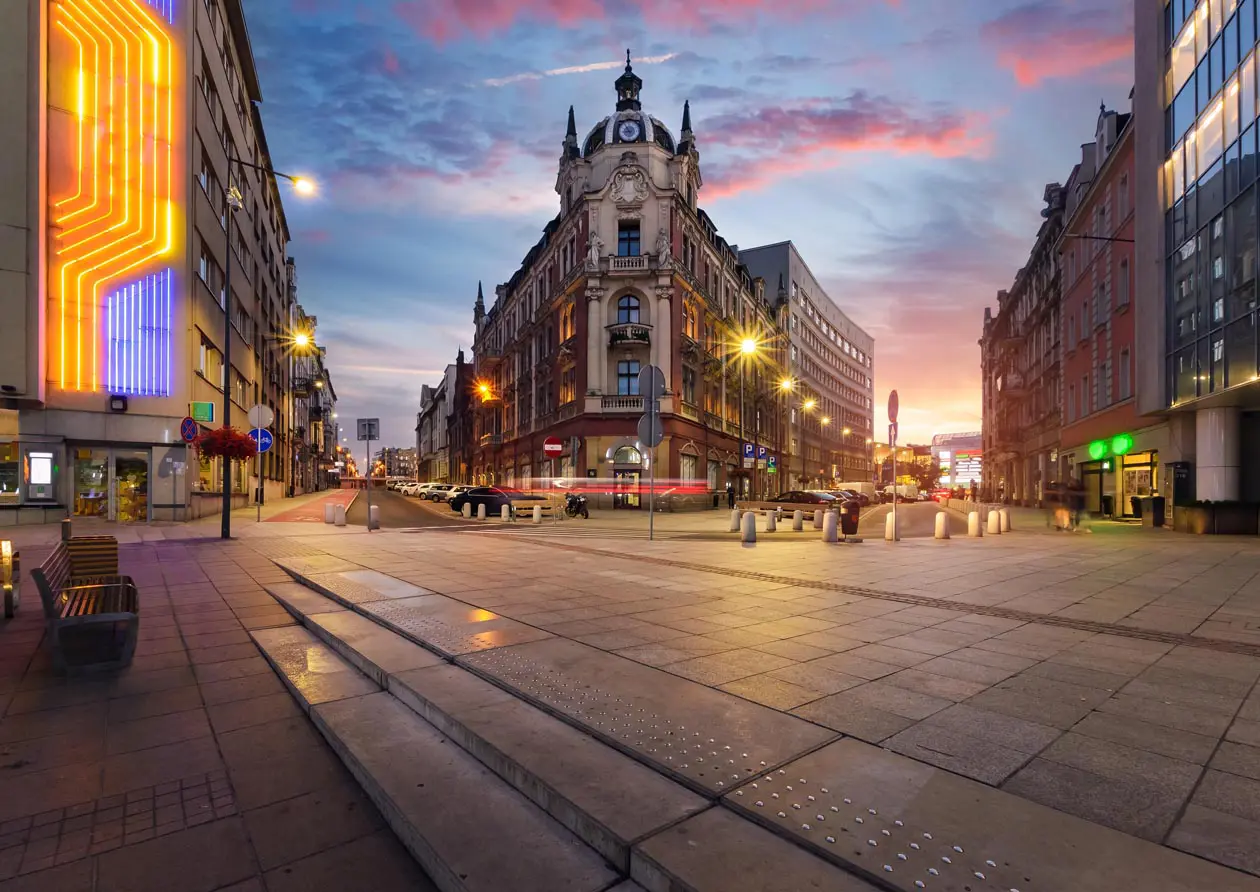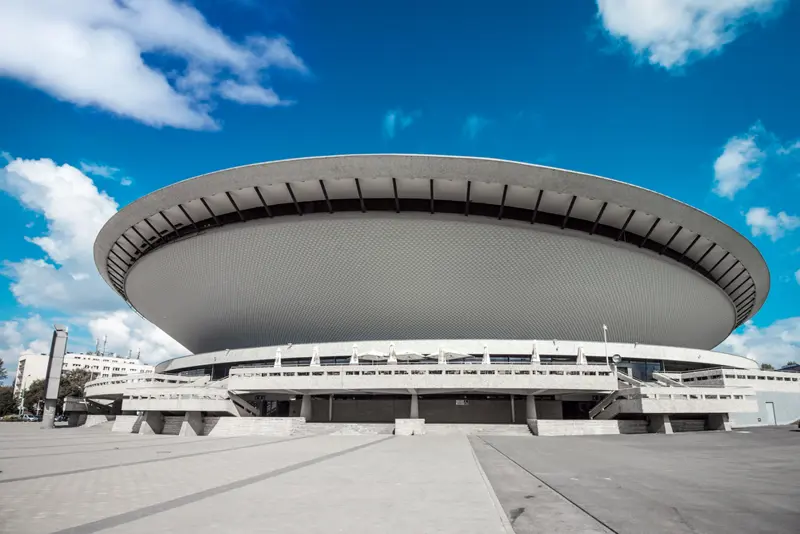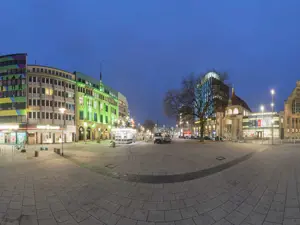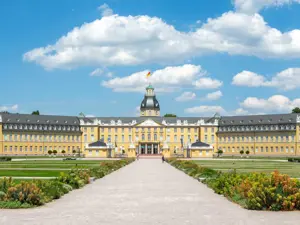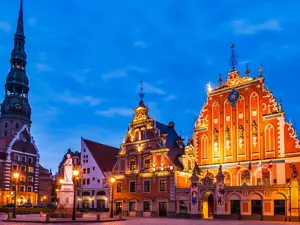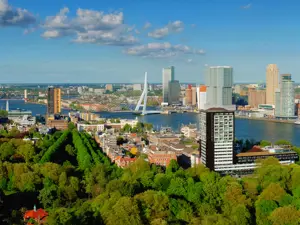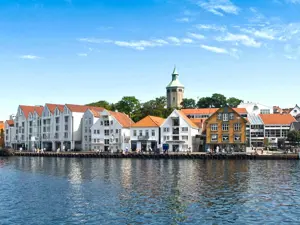A mining city
Katowice is the ideal centre for moving between two of the most visited places in Poland: the concentration camp of Auschwitz and the Monastery of the Black Madonna of Jasna Gora. We are in Upper Silesia, the most densely populated and urbanised region of Poland, where everything revolves around the metal works and coal mines. At first sight, Katowice seems to have little to offer, but a visit to the urban centre is an interesting experience.

Katowice Photo: Copyright © Sisterscom.com / Depositphotos
Most of the urban architecture dates back to the Communist era, but there are several well preserved gems dating back to the nineteenth century. The most distinctive building in Katowice is the Spodek - literally “Flying Saucer” - so called because of its shape which is similar to the popular image of a UFO, a uniquely shaped construction and the venue for sporting, musical, cultural and commercial events.
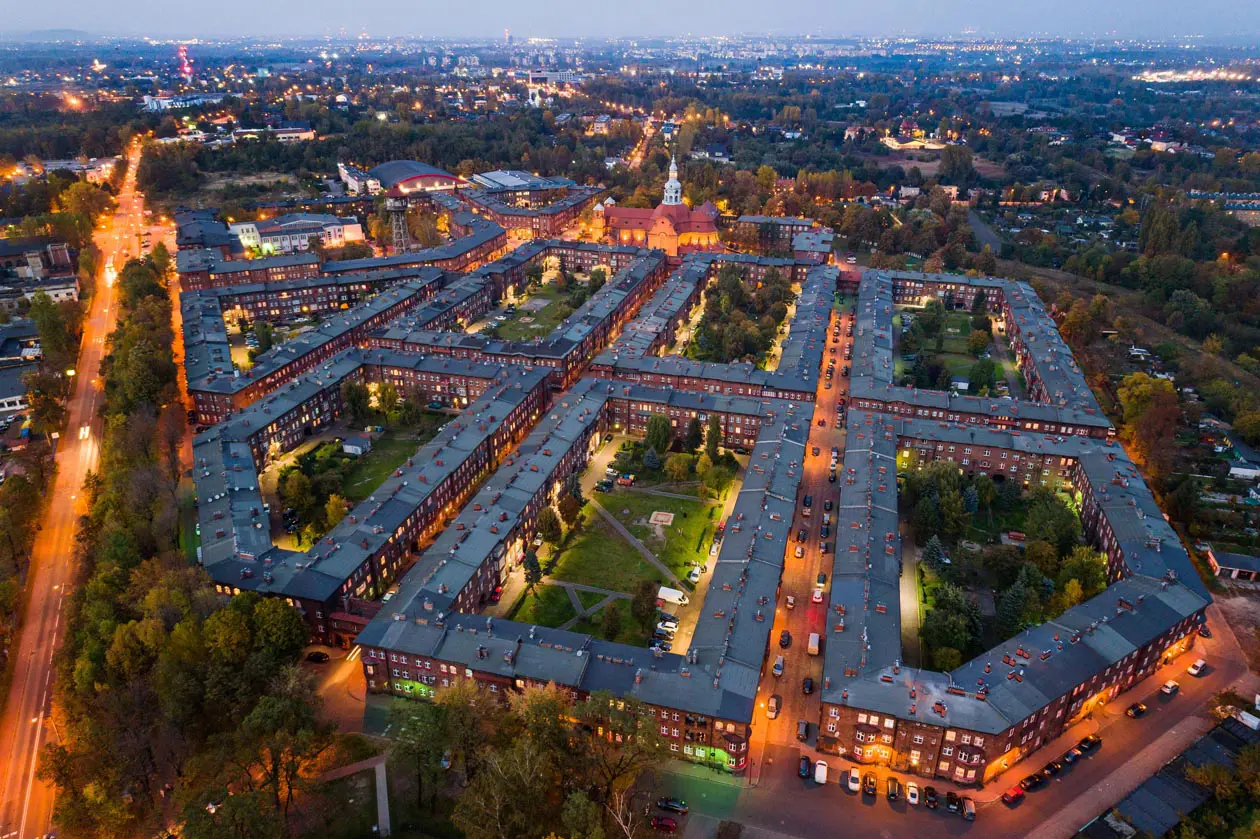
Nikiszowiec district, Katowice Photo: Sisterscom.com / Depositphotos
The district of Nikiszowiec, which was built in 1908 for the miners who worked in the nearby coal mine, has a certain charm. The mine, with its high chimneys, dominates the landscape, but you only have to lower your gaze to see that, alongside, stands a district filled with dark red-brick buildings (familoki) with contrasting bright red windows that lend a unique character to the scenery.
The landscape is surreal, and walking along the streets is like travelling back in time, because everything is as it was one hundred years ago, from the buildings to the street lamps, shop signs and the beautiful Baroque Church of St. Anne.

Katowice, S. Anna Church Foto: Copyright © Sisterscom.com / Depositphotos
The Silesian people’s strong bond with the mines is expressed by the repeated references to the culture of the region. Children are often told the tale of the good spirit of the miners, Skarbnik; sculptures are often made of coal; and during local festivals, wonderful entertainment is provided by the miners’ orchestras and women and children in traditional Silesian dress. In many mines, such as those of Bytom and Zabrze, guided tours are organised and include an underground descent.
Some 40 km from Katowice, in the city of Oswiecim, stands the concentration camp of Auschwitz, witness to the extermination of one and a half million people, mostly Jews. Today this place, a symbol of the most devastating genocide ever committed by man, houses the Holocaust Museum. The museum visit begins with a documentary film on the liberation of the camp (15 mins); it continues with a visit to certain sections of the prison, the gas chambers and crematorium, and it ends with a climb up the watch tower to get an overall view of the largest Nazi extermination camp.
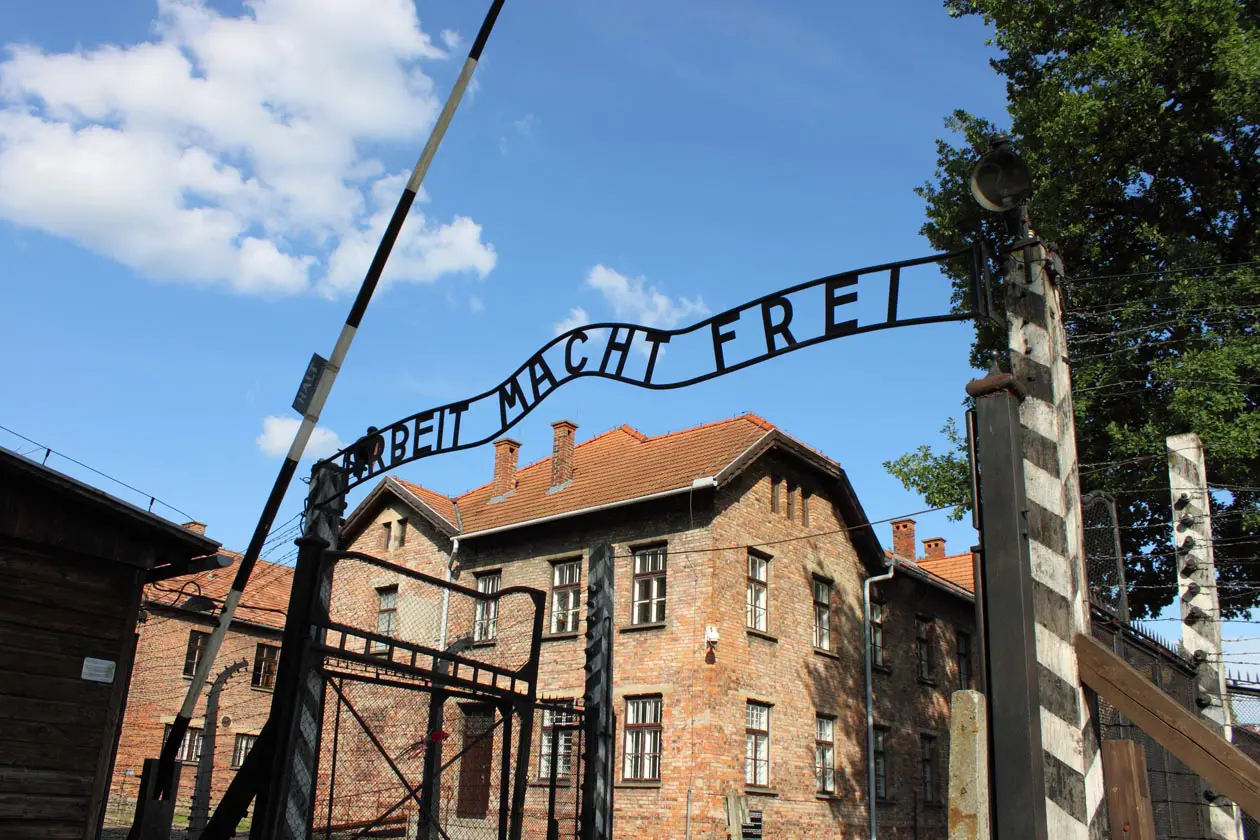
Auschwitz Photo: Copyright © Sisterscom.com / Depositphotos
The monastery of the Black Madonna of Czestochowa is approximately 40 km from Katowice and can be reached by bus, train or hire car. It consists of a basilica and is divided into many small areas. The basilica of the Holy Cross and Nativity of Mary is an excellent example of Baroque art. The polychrome of the vaulted ceiling of the presbytery and the main nave depict the story of the Holy Cross and the miracles performed through the Madonna of Jasna Gòra. The altar of St. Maximilian Kolbe, depicted with the uniform of the inmates of the extermination camps, is found in the basilica.
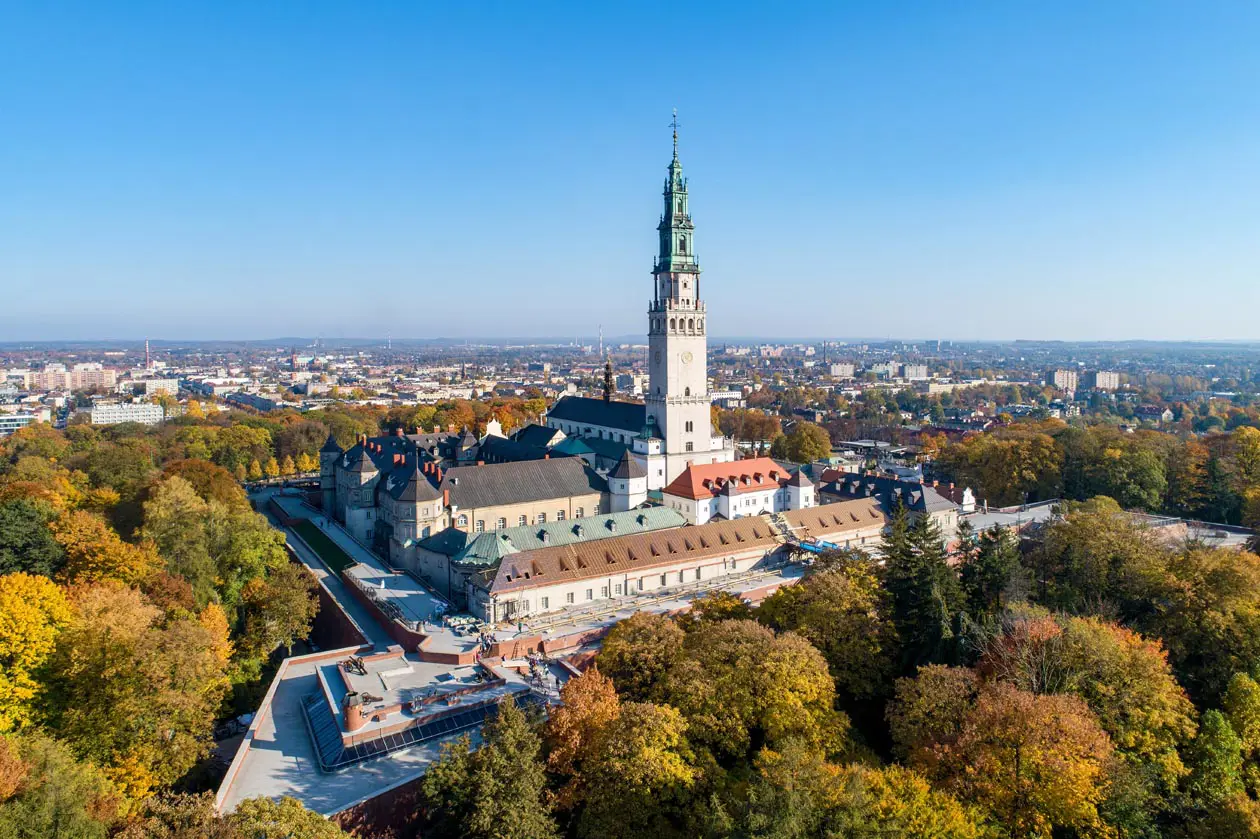
Monastery of the Black Madonna of Czestochowa Photo: Copyright © Sisterscom.com / Depositphotos
The chapel houses the miraculous image of the Black Madonna, who was supposedly painted by St. Luke on a cypress wood board that came from the house of the holy family. It is said to date back to 46 AD and was firstly transferred from Jerusalem and, after much difficulty, arrived in Poland.
Pilgrims began arriving around 1400, when a Gothic chapel was built. Between 1642 and 1644, a three-naved church was built alongside, in the style known as “Lublin baroque” (between mannerism and baroque). The building is today considered one of the most significant of the counter-reformation period. The sacred icon was later positioned on a Baroque altar of ebony and silver. The route leading to the Madonna is several tens of metres long, which many worshippers cover on their knees.
Polish cuisine
Polish cuisine has different characteristics depending on its regions. In the northern Poland, rich in lakes, you will find mainly fish-based dishes; in Masovia and Podhale, soups are renowned, such as zurek (made of rye flour with sausage and eggs) and kwasnica (made of sauerkraut, potatoes and bacon); Wielkopolska is known for its duck-based dishes; in Suwalki, potatoes are the protagonists of many recipes. You must try the famous pierogi ravioli with different fillings (meat, sauerkraut, mushrooms, potatoes and cheese).
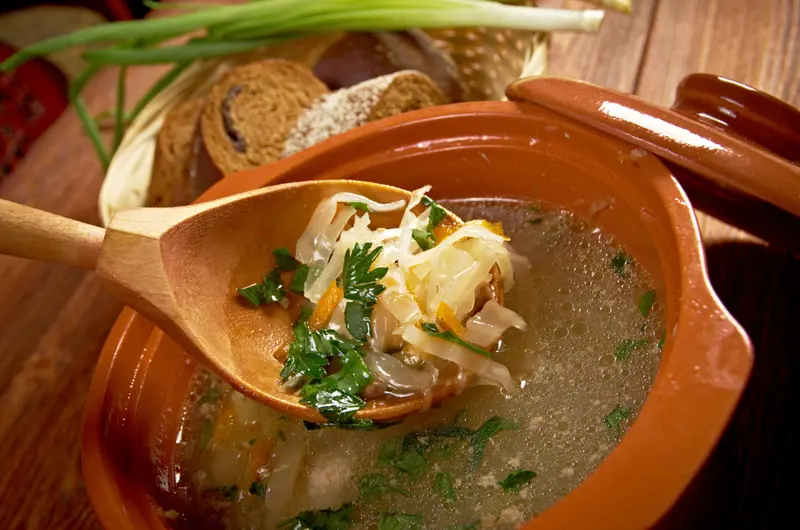
Photo: Sisterscom.com, Shutterstock
Kwasnica
Text by Luca Lembi
Updated by Alisè Vitri
Avion Tourism Magazine
Photos for editorial use only: Copyright © Sisterscom.com, Shutterstock / Depositphotos
Copyright © Sisterscom.com
Photos for editorial use only: Copyright © Sisterscom.com, Shutterstock / Depositphotos
Copyright © Sisterscom.com
Video: polska.travel
Tourism Board
polska.travel
www.polonia.travel
www.polonia.travel
Partnership with Booking.com
Where to sleep in Katowice
Katowice is a welcoming city and offers different possibilities for accommodation.
To find the ideal hotel and the best offers you can do a search for the stars but also for districts or landmarks.
LANDMARKS
Hotels in tourist areas
AIRPORT
Hotels near the airport
WHERE TO GO in Katowice
Monuments in Katowice

Photo: Sisterscom.com, Shutterstock
CHRIST THE KING’S CATHEDRAL
The form and location of the cathedral, in the urban landscape of Katowice, is of particular importance. The cathedral is considered to be the second largest church in Poland. In 1983 Pope John Paul II came to pray at its altar. The character of the facade is determined by a monumental colonnade surmounted by writing in gold: Soli Deo honor et gloria (Only God is worthy of honour and glory).
SPODEK
This multi-functional arena has an unusual architectural shape. It hosts various events, including exhibitions, sports activities, trade fairs and conferences, meetings and training events, which can also be held simultaneously.
KATOWICE RYNEK
This is the oldest part of the city with numerous historic monuments, where you can find different shops and typical restaurants. Unfortunately in the fifties of the twentieth century, many monuments were demolished to create new and more modern buildings. The contrast between old and new is however very interesting. Katowice Rondo is the largest square in the city.
PALAC GOLDSTEIN
Situated in Freedom Square, this is a neo-Renaissance building that belonged to the brothers Abraham and Joseph Goldstein. On one side are three feminine statues that symbolise the industry of the arts, science and the Fine Arts. Today the building is owned by the city of Katowice and houses municipal offices.
Museums in Katowice
THE HISTORICAL MUSEUM
In 1979 the municipality set aside funds for constructing the museum and over the years this museum has begun to organise exhibitions, undertake scientific research activities and produce its own publications. The seat of the museum is a splendid municipal building and one of the most interesting in Katowice.

Katowice, Silesian Museum Photo: Sisterscom.com, Shutterstock
THE SILESIAN MUSEUM
The museum was founded in 1929 and then restored in 1984. Over the years, it has accumulated collections of over 75,000 items that are regularly displayed. One very important collection consists of 233 works of art dating back from the IX to XX centuries, which are displayed in the Polish Gallery of Art. The museum is divided into six sections: archaeology, ethnography, history, research and learning. Over the past 20 years over 500 exhibitions have organised, some 27 of which have been prize-winning shows.
Excursions in Katowice

Photo: Sisterscom.com, Shutterstock
AUSCHWITZ-BIRKENAU
In 1939, Silesia and Katowice were annexed by the Third Reich and the city industries were obliged to undertake forced labour to serve the military needs of the Germans. At the same time, in the small town of Oswiecim (Auschwitz), situated 40 km from Katowice, an extermination camp was built. From 1940 to 1945, Auschwitz was witness to the extermination of over one and a half million people. Today it houses the Holocaust Museum.

Photo: Sisterscom.com, Shutterstock
CYCLE ROUTE
Katowice can be visited by bike. The routes are different and varied. The first path starts from the city centre next to the “Monument to Freedom Fighters” of Silesia and ends in Podlesie. Another interesting cycle path wides around the central districts of the city, such as Muchowiec, Brynow, Piotrowice, Kostuchna and Podlesie.
Photo: Sisterscom.com, Shutterstock
LUBLIN
Lublin, located in eastern Poland, is a city rich in history and culture. Its well-preserved old town, featuring Renaissance and Baroque architecture, offers a delightful stroll through its cobbled streets. The city is renowned for its vibrant arts and cultural scene, hosting numerous festivals and events. Highlights include the Lublin Castle and the Kraków Gate, historical landmarks that testify to the city's fascinating past.

Photo: Sisterscom.com, Shutterstock
RZESZOW
Rzeszów, located in southeastern Poland, is a dynamic and modern city that blends history with innovation. Its charming old town features elegant historical buildings and a vibrant market square, offering a welcoming rich atmosphere. The city is also a hub for the aerospace and technology industries. Key attractions include the Rzeszów Castle and the Ethnographic Museum.
Partnership with GetYourGuide
Tours and excursions
News & Useful info
You might be interested in
Other destinations
Airports nearby Katowice



